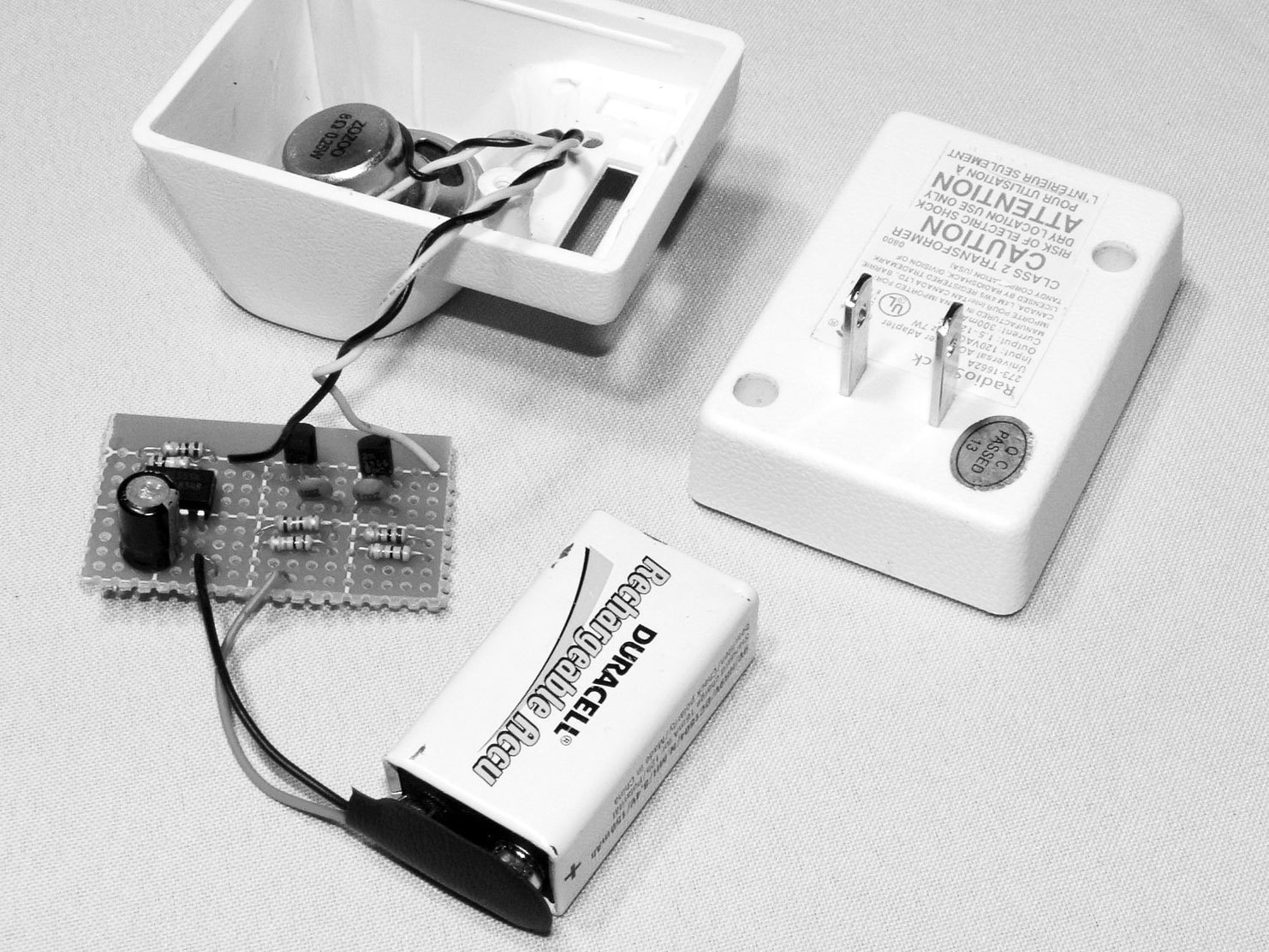Some other good hiding places might be a pop can, lunch box, wall clock, tissue box, or even a working appliance. A solid cabinet will need a small hole for the speaker. We found that a ¼” hole was large enough for the tiny 2″ speaker we used.
You can also use a piezo buzzer instead of a speaker, which would make the unit even smaller and possibly louder owing to the very good high-pitched operation of the piezo element. To use a piezo buzzer in place of the speaker, connect resistor R4 (which used to connect to one of the speaker terminals) directly to the +9V line, where the other speaker terminal used to connect.
Now you can place the piezo buzzer in parallel with R4 to make it function. This is done because the piezo element will offer very high resistance as compared to the very low resistance of the speaker, and the current from the battery needs to flow to transistor Q2’s collector.
The final product looks at home just about anywhere there is a wall socket, and can be easily hidden under furniture or inside another appliance for truly covert, mind-warping, annoying fun and games. We have covered up the voltage switch from the original wall wart with black tape, and the little hole on the top of the case is barely large enough to pass a decent amount of high-pitched sound.
With the component values given, the beep emits about once every 3 minutes and lasts for approximately 5 seconds, just enough time to entice the victim to look for the source of the sound before it goes silent.
We like to drop the unit in a room, then claim that we can’t hear any beeping. This really gets the “beeper hunter” ticked off, and they try even harder to track down the evasive beeping thing to no avail. “I don’t hear anything, pal, maybe you need an ear exam, or you should stop listening to pirated music on your MP3 player. I heard that the new copy protection can make your ears ring for days!”











